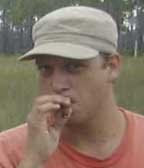Sumatra. For most of us, it is the best damned coffee from Starbucks. For those of us who are geographically inclined, it evokes images of a smoky coffee filled rapidly disappearing tropical Indonesian rain forest once filled with tigers and orangutans. For Florida plant enthusiasts, it is also well known for its spectacular prairies and bogs containing a carnivorous oddity. Pitcher plants.
Florida's Sumatra is located in the panhandle west of Tallahassee. It is surrounded by Appalachicola National Forest, an immense expanse of pine dominated ecosystems that abuts the Appalichicola River which is fed by the southern foot hills of the Appalachian Mountains. That region is a hub for botanical endemism and biodiversity, and contains a unique flora, but I digress...
My first exposure to Sumatra happened several years ago during a wonderful program on carnivorous plants presented at the monthly meeting of the Dade Chapter of the Florida Native Plant Society. Clyde Bramblett was the speaker, an old time plant enthusiast with a penchant for all plants carnivorous. His fascination with these unusual plants translated well by his many photographs and evident passion. Florida is lucky to be one of the centers of diversity for carnivorous flora. After his talk, I was determined to visit this region someday and witness the beautiful meat eating plants in person. This lifetime bucket list goal came to fruition during the Thirtieth Annual Florida Native Plant Society (FNPS) Conference which was held in Tallahassee Mid-May of this year.
Early in the morning a group of twenty or so FNPS field trip participants congregated and set forth down some two lane highways traveling through the National Forest. Our primary leader, Guy, was a lean man in his early sixties I'd guess. Throughout the field trip, he bequeathed his plant expertise with generosity and assurance, which this hobo botanist very much appreciated. Some plants I recognized, and many were familiar cousins of species found in my realm 400 miles away, but there was a treasure trove of new never before seen species. Our secondary leader, Virginia, a photographer, to each of us dealt out a lovely potential list of plants in booklet form with a personal photo of a pitcher plant prairie on the cover. I scanned through it immediately, and carefully set it aside to peruse later.
During the drive, my mouth salivated, and my hands twitched at the wheel desiring to pull over as clumps of pitcher plants and other cool herbs were speedily passed by. Fortunately, after a relatively brief drive that took forever, our caravan reconvened at our first stop; Post Office Bay. Members piled out of their carpooled vehicles, got all there gear, and gathered around Guy to hear about the natural history of the area. It wasn't before long that cameras were flashing, and people were huddling about the many wildflowers and herbs. We were all excited, awe struck, and chomping at the bit to walk amidst the pitcher plants. (Part 1 of 2, Panhandle Ramble)


